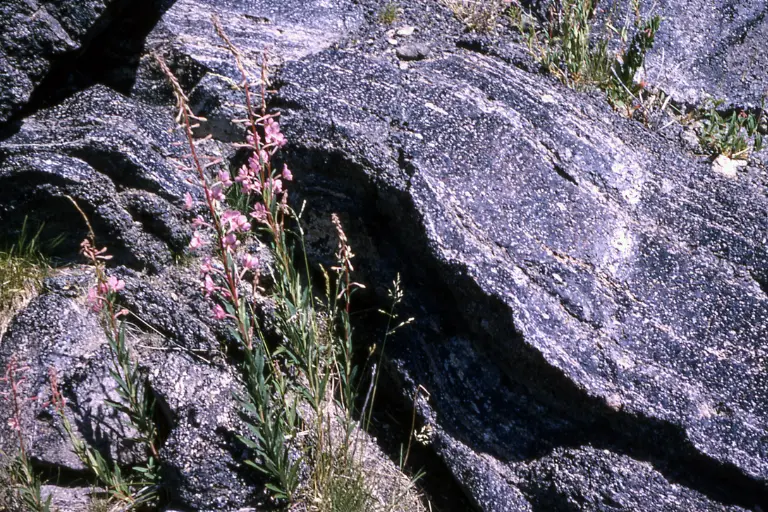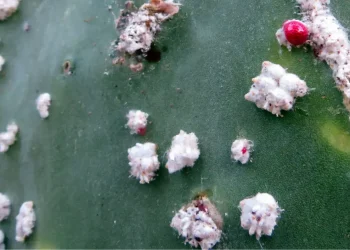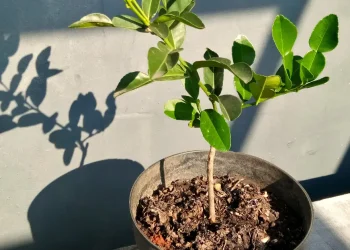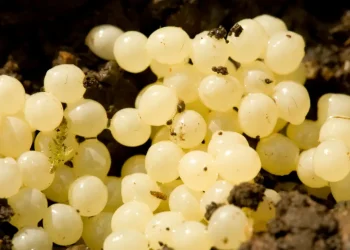Perlite was known for centuries. But it’s only recently that it has found its way among farmers and gardeners. Perlite started making its mark in gardening circles during the mid-20th century. Its popularity grew steadily, and nowadays, you can find it as a component in almost every soil mix.
But its growth wasn’t so straightforward. As with any other novelty, there were a lot of questions asked. One big controversy was over the sourcing of perlite. There has been growing concern that perlite is contained with asbestos, which later turned out to be false.
In this article, we’ll focus on perlite from the compositional point of view. I will take you through the process of making perlite and directly challenge some of the claims surrounding perlite.
What is Perlite Made out of?
Perlite are small pebbles of natural glass that are found in volcanic deposits. This material forms when lava cools rapidly and traps water molecules inside. This results in a lightweight, porous material.
That sums up perlite in two sentences, but let’s return to the beginning.
Perlite begins its journey as obsidian. When obsidian is heated to extreme temperatures, the water trapped within the rock starts to vaporize, causing it to expand dramatically. It can expand to as much as twenty times its original volume.

This expansion occurs explosively, forming countless microscopic bubbles within the glassy structure. The bubbles created during this process, called hydration, account for its exceptional properties.
In the picture above, you can see how some of the obsidian remained unexpanded.
Where is the Main Source of Perlite?
You can find perlite deposits in all around the world. However, the main known perlite reserves are located along the Aegean coast in Turkey. Other huge resources of perlite can be found in Armenia or Greece.
These are usually countries or areas with active or historically active volcanoes.
Although perlite deposits are present relatively shallow below the earth’s surface, you would have a hard time finding it in nature. To come across a deposit, you would need to dig between 6 to 50 feet (2 to 15 meters) deep.
But that’s not too challenging for commercial extraction, for which the surface mining method is used.
Is Perlite Natural or Man Made?
Perlite, unlike many other gardening additives, is entirely natural. It comes from a volcanic rock bearing the same name.
However, if I were to bring you a piece of raw perlite, I’m sure you wouldn’t recognize it.
Raw perlite, as it is sourced in nature, is still a big rock that is oftentimes grey or can even bring a green, blue, or brown hue.
Once it’s mined, it is transported into a processing plant, where it’s crushed and screened to remove any impurities.
In the second stage, it is rapidly heated for a short time to a temperature of around 1600°F (900°C). In the furnace, it starts to expand and pop like popcorn, resulting in the sterile, white, and lightweight perlite you know and can get in your local gardening center.
Is Perlite Toxic to Humans or Bad for the Environment?
Perlite is often met with questions and confusion about its safety. Fortunately, there have been numerous studies that show that perlite and perlite dust are NOT toxic to humans.
Health surveillance studies of workers in perlite mines, who are naturally very exposed to perlite dust, indicate that their work does not adversely affect workers’ respiratory health. A similar conclusion was also reached by studies focusing on the mortality rates of residents around those mines.
I’m, of course, not talking about consuming perlite here. Perlite is a valuable asset in gardening, and it’s not intended for consumption. Although it is not toxic to humans or animals, you shouldn’t eat it. Your body can’t break it down, so trying to digest it would be like filling your stomach with stones.
To underline its safety, many toothpaste manufacturers use perlite in their products. It is added as a mild abrasive.
To answer the question of whether perlite is bad for the environment, it depends on the point of view. Perlite does not pollute the environment. However, it is a non-renewable resource. But there’s still plenty of left. Today, only about 1% of our global perlite has been mined.
But you can also look at things from a different angle – perlite mining and processing do impact wildlife and plant life in the surrounding areas. The process of heating perlite to achieve expansion also contributes to carbon emissions.
Source: Perlite toxicology and epidemiology
Does Perlite contain Asbestos?
Let’s stay with the question of perlite toxicity for a moment. There has been growing concern that perlite may be contaminated with asbestos, But this claim is wrong.
Asbestos is naturally found in the environment in underground rocks. But perlite is sourced and mined just a few feet under the ground and is never found in the company of asbestos. It cannot be contaminated unless it is, for some reason, stored with it. Which is nonsense.
Even though many institutes did testing on perlite and didn’t find any traces of asbestos.
Before you go…
Perlite is an excellent addition for plants, which also did not escape hostile glances. Despite all the concerns and confusion surrounding perlite, it is a non-toxic, natural material made from expanded volcanic glass bearing the same name. However, even too much of a good thing like perlite can be harmful. So don’t forget to check out my other article focusing on the perfect ratio of perlite to soil…
Can You Add Too Much Perlite to Soil? What is the Perfect Ratio?













